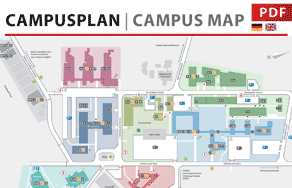DataCast
(content-centric network protocol)
| Duration: | 01.08.2010 - 31.12.2013 |
| Project Leader: | Prof. Dr.-Ing. Horst Hellbrück |
| Staff: | Dr.-Ing. Torsten Teubler, Mohamed Hail |
Background
Besides evolutionary development of the future Internet also completely new approaches evolve which propose an entirely different communication paradigm. The project "Datacast" investigates data-centric network protocols in the Internet for the development and evaluation of content-centric communication paradigms. Let us first take a look into the current functioning of the Internet. Today, a key element of the internet is an end-to-end connection for data transfer, a communication paradigm that has its origins in the 60 years of the last century. End-to-end means that two communicating partners exchange messages directly with each other. These messages are "just" transmitted through the network and are not addressable. Our research follows the "content-centric" paradigm, where transmitted data is being addressable. The CoSA research group examine the role of this approach in a future "content-centric" Internet.
Objective
The focus of Datacast is the development and evaluation of a content-centric communication paradigm for the Internet. This approach should replace the existing end-to-end communication paradigm. The goal of this project is new models, software architecture, algorithms and protocols for future data-centric Internet.
Results
RoombaNet – Testbed for mobile networks

Fig.1: Testbed architecture for the evaluation and testing of mobile network protocols

Fig.2: A mobile node on a
Roomba household robot
A testbed has been created for evaluation and testing of new approaches and algorithms at the University of Applied Sciences Lübeck. The testbed consists of stationary and mobile sensor nodes that are deployed on mobile Roomba household robots. The mobile robots are simple and effective to control over a serial interface and perfect for use as carrier systems for wireless devices. The mobile nodes can return to to their charging stations by sending a command.
The mobile nodes communicate either via IEEE 802.11 or IEEE 802.15.4 and are controlled independently. During the test, the data is collected via wireless LAN and stored on the testbed server. Then the data can be analyzed and evaluated. The automated test run starts, when the mobile node received its configuration, the protocol and software. In addition, the RoombaNet is integrated in the testbed "Wisebed" and thus fully remotely controllable over the Internet.
Content-centric Network

Fig.3: An example of data distribution in a data-centric network
Data-centric protocols use data storage on each network level. The data storage in data-centric networks is a packet-level cache and is available in each node of the network. Data can therefore be stored closer to the user. The response time (data transmission, waiting time and processing time) is shortened from the user's query until receiving the associated response. Because the data is requested from the data store in the vicinity of the user rather than the more distant source, the amount of traffic (number of packets and packet size) is reduced in the entire network.
Another advantage of data-centric networks is the flexible use of security mechanisms. The data may prove their authenticity, for example, by a cryptographic signature, during the transmitting. The data-centric approach also plays a large role in sensor networks. During the data distribution, the network nodes are able to cache data from the sources efficiently to answer questions.
Project partner | Founded by | |
Institut für Telematik, Universität zu Lübeck
| Bundesministerium für Bildung und Forschung
| |
| ||
Clustermanagement Digitale Wirtschaft Schleswig-Holstein |





